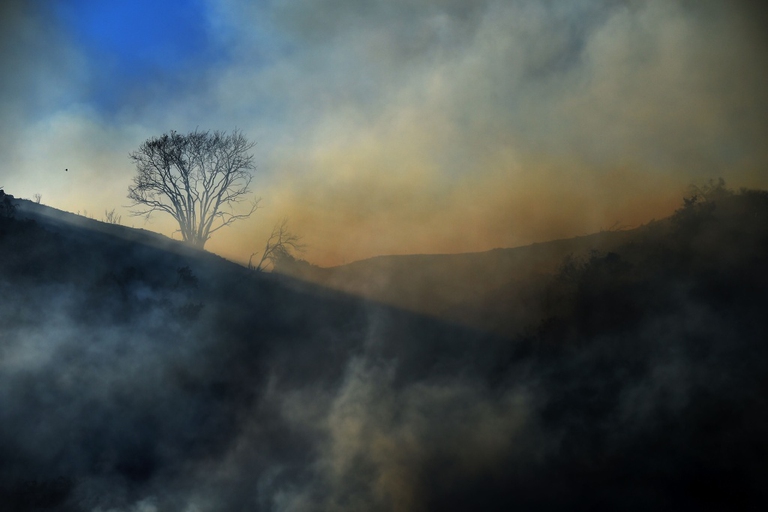
Our species took its first steps in a world covered in trees. Today, forests offer us sustenance, shelter, and clean the air that we breathe.
Siccità, incendi e parassiti stanno decimando le straordinarie foreste della Sierra Nevada ad un ritmo senza precedenti.
There’s a silent, relentless die-off of trees going on in California that could have effects on the entire country. At least 66 million trees have died in California’s Sierra Nevada forests since 2010. Of them, 26 million trees have died over the past 8 months only.
The causes of this unprecedented phenomenon are many. First of all is the drought that is bringing California to its knees and is threatening the very survival of giant sequoias (Sequoiadendron giganteum). Sierra Nevada’s snow cover registered its lowest levels in April 2015.
A pest has contributed to worsening the situation, it’s the bark beetle. This small beetle 4 to 5 centimetre long notches the surface of wood, becoming one of the most destructive parasites of conifer forests. Plus, the lack of water makes trees more vulnerable to bark beetles’ attacks.
Extraordinary high temperatures and the lack of rainfall could lead to devastating wildfires that would further destroy California’s forests and threaten local communities.
Aerial views of the ancient, lush forests of Sierra Nevada show a disquieting rust-coloured landscape. According to the United States Forest Service, trees’ mortality rate has increased dramatically over the past year, with a 65 per cent increase in the counties of Tuolumne and Kern, an area of over 30,000 hectares.
California governor Jerry Brown declared a state of emergency in October and established a task force to remove dead trees threatening drivers and mountain communities.
US Agriculture Secretary Tom Vilsack claimed that without investing in forest management in California – and in the US in general – the disaster is just going to get worse. Thus, he urged the Congress to take proper measures.
Kathryn Phillips, Director of Sierra Club California, US’ oldest and largest environmental association, hopes that this die-off would convince policy makers about the urgency of curbing pollution that is contributing climate change. “This is a warning to all of us,” Phillips said. “We need to cut our air pollution and greenhouse gas emissions more. We’re on the right path, but we need to accelerate our effort.”
Siamo anche su WhatsApp. Segui il canale ufficiale LifeGate per restare aggiornata, aggiornato sulle ultime notizie e sulle nostre attività.
![]()
Quest'opera è distribuita con Licenza Creative Commons Attribuzione - Non commerciale - Non opere derivate 4.0 Internazionale.
Our species took its first steps in a world covered in trees. Today, forests offer us sustenance, shelter, and clean the air that we breathe.
Poachers in Africa are encroaching on wildlife land and killing rhinos in travel hot spots now devoid of visitors due to the coronavirus pandemic.
Actor and environmental activist Leonardo DiCaprio has contributed two million dollars to a fund to protect Virunga National Park in Congo from threats such as terrorism, the coronavirus and poaching.
For the first time in seventeen years, Iceland’s two main whaling companies won’t resume whale hunting. The announcement concerns this year’s season but could carry into the future.
The relationship between the coronavirus and wildlife is complex: while the pandemic may lead to a reduction in the illegal trade in wild animals, it may also encourage it in other respects.
The largest coral reef in the world is severely threatened by climate change, but researchers are developing strategies that could contribute to saving the Great Barrier Reef.
NGO Free the Bears has opened a mountain sanctuary for moon bears in Laos. With the government’s help, it aims to close all bile farms by 2022.
Seychelles have extended its marine protected area, which now covers over 400,000 square kilometres, an area larger than Germany.
The tapir was reintroduced into Brazil’s Atlantic Forest, the country’s most at-risk ecosystem. The species can play a key role in the forest’s recovery.








